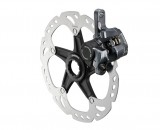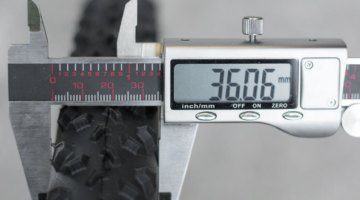Disc brakes have really struck a cord with readers, racers and mechanics as everyone starts planning out what new gear to invest in for the coming season. We got a lot of feedback on our last Mechanical Monday topic of disc brakes, so much so that Stu Thorne, the owner of CyclocrossWorld.com, called to chat with me for a bit about his thoughts on disc brakes. Last season, Thorne put his Cannondale-CyclocrossWorld.com rider Tim Johnson on them for a few races, and Johnson was favorably impressed. For more on Johnson’s disc brake views though, you’ll have to wait for our feature story on him in the next print issue. (Can’t wait? Check out Tim Johnson with his Cannondale SuperX.) Today, Mike Smith of Rad Racing shares his two cents with us.
by Mike Smith
Mechanic, Rad Racing Northwest
Although I didn’t get to work on any disc brake–equipped cyclocross bikes this year, I do feel that we will be seeing more disc brakes popping up on cyclocross bikes in the upcoming seasons. While I’m somewhat split on the idea of disc brakes on cyclocross bikes, there’s no way one can overlook the advantages offered and the disadvantages presented with the technology.
With a team based in the muddy Pacific Northwest, the advantages are many. With disc brakes, mud clearance and build-up are dramatically reduced. This translates directly to a lighter bike and fewer bike exchanges through the course of a race. No one can deny the braking power afforded by disc brakes. Imagine bombing into that sketchy corner on your favorite course that much faster, knowing that you can clamp on those disc brakes and slow down just in time. Disc brakes also make switching between aluminum and carbon wheels faster if you are one to constantly swap out brake pads for different conditions or rim materials.
Despite the advantages, I still think there are disadvantages to be addressed. Just as when the transition happened with mountain bikes, many people have an established quiver of wheels. These would all have to be migrated over to disc at what could be a fairly substantial investment. If you’re not fortunate enough to have a back-up bike in the pits, you likely depend on neutral support or your own set of wheels in the pits. I’m guessing at this point, most neutral support teams at our local races don’t have disc-equipped spare wheels. This pretty much guarantees that you will need to factor in the price of a new disc-specific wheelset with any new disc brake-equipped bike to prevent mid-race DNFs from flats or other wheel issues.
Ultimately, I think the adoption of disc brakes in the cyclocross world will be slower than what was experienced in the mountain bike industry. I don’t think the driver behind this will be the advantages or disadvantages of the system, but rather, due to much of cyclocross’s equipment coming from road technology. This will require the road market to change as well for a widespread adoption. While this isn’t the case for scenarios using cable actuation and semi-custom wheels, if we want to eventually progress to full hydraulic systems and still use our favorite big name factory wheels, this is going to require the current brake/shift lever and wheel manufacturers to adopt disc brake technology on product lines that need to service the needs of both road and cyclocross racers.
In any case, I’m excited (and a bit anxious) for the possibilities of disc brakes on cyclocross bikes and where it will lead the technology for both road and cyclocross.
Want to know what’s out there? Shimano has started to take cyclocross seriously, and at the North American Handmade Bicycle Show (NAHBS) in Sacramento, the company has unveiled a new mechanical disc brake for cyclocross racers that is scheduled to be ready for this fall. For a video tour of the new disc-equipped Felt bike, check out our look at the Felt 65X Disc-Equipped bike.





























